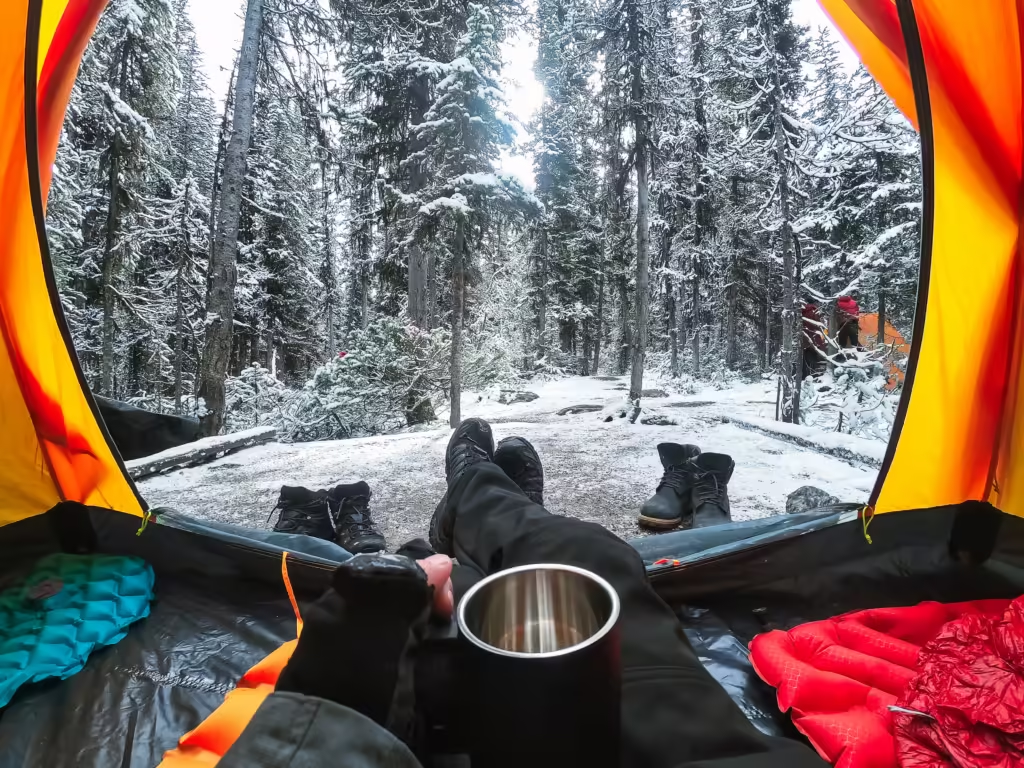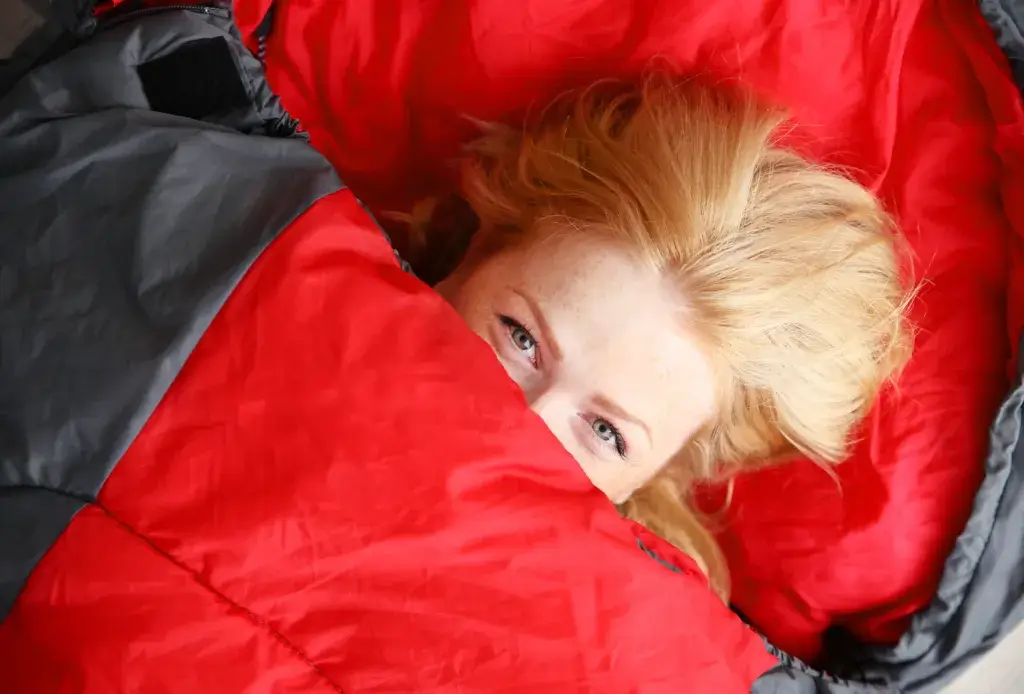How to Heat a Tent Without Electricity: Cozy Camping Tips for Chilly Nights
Camping in cold weather can be an adventure, but let’s be honest – staying warm matters. If you’ve ever shivered in a tent with no power, you know the struggle.
There are plenty of ways to heat your tent without electricity. Think hot water bottles, extra insulation, or even just using what nature gives you.

We’ve tried a bunch of tricks to stay warm during cold-weather camping. From tossing hot rocks into the mix to playing around with insulation hacks, there’s a lot you can do.
Our tips will help you actually enjoy those chilly nights instead of just surviving them.
Key Takeaways
- Use natural heat and insulation to keep your tent warm
- Pick the right gear and prep your site for max coziness
- Stay safe—always think about ventilation and heater safety
Understanding Tent Heating Essentials
Heating a tent without electricity isn’t rocket science, but it does help to know the basics. Let’s talk about heat transfer, tent choice, and why you can’t just zip everything up and hope for the best.
The Science of Heat: Convection and Radiation
Heat moves around in two main ways inside a tent. Convection is all about warm air swirling around, while radiation is the heat you feel coming off hot stuff.
If you want to heat a tent without electricity, you have to trap that warmth. Insulation is your friend; it slows down how fast heat escapes through the tent walls.
Radiant heat from your body or other warm objects helps too. Emergency blankets or anything shiny can bounce that heat back your way.
Selecting the Right Tent
Your tent choice really matters for staying warm. An insulated tent or a solid 4-season tent is best if you’re heading out in the cold.
These tents usually have thicker walls, better floor insulation, and less mesh. That means less heat sneaks out and less cold air sneaks in.
If it’s not freezing, a 3-season tent with a decent rainfly can work. Just add some insulation to boost the warmth.
Importance of Proper Ventilation
It sounds weird, but letting in some fresh air is important when you’re heating a tent. Good ventilation keeps you safe and surprisingly, even warmer.
Ventilation helps cut down on moisture, stops condensation, and lowers carbon monoxide risk. It’s all about balance – you want enough airflow to stay dry, but not so much that you lose all your heat.
Small vents near the top of the tent usually do the trick. They let out damp, warm air without letting all your precious heat disappear.
Natural Heating Options
You can stay surprisingly warm in a tent, even off-grid, with a few natural heating tricks. Body heat, hot water bottles, and heated rocks all help.
Utilizing Body Heat
Don’t underestimate your own warmth. A little exercise before bed – think jumping jacks or jogging in place – gets your blood moving and helps you warm up.
Sleeping close together in a small tent keeps heat in. A cold-weather sleeping bag traps that warmth, and an insulated pad underneath makes a big difference.
Wearing layers to bed is a must. Start with a base layer, add a sweater or fleece, and finish with a jacket if you need it. Hats and thick socks help more than you’d think.
Harnessing the Heat from Hot Water Bottles
Hot water bottles are a classic for a reason. Fill them up with water heated over the campfire and tuck them into your sleeping bag before you crawl in.
Stick them at your feet, near your core, or even in the tent corners. Just make sure they’re sealed tight and maybe wrap them in a towel to avoid burns.
Size: XXX-Large, BPA & PVC Free, 100 Fl Oz Capacity
The Power of Hot Rocks and Stones
Heated rocks have been a go-to for centuries. Grab smooth, dry river rocks (never porous ones), heat them in the campfire, and carefully bring them inside.
You can put them in metal containers, wrap them in towels, or bury them under a bit of sand on the tent floor. They release heat slowly all night.
Handle them with care – hot rocks can burn you or damage your gear if you’re not careful.
Insulating Your Tent for Warmth
Most of your heat loss happens through the tent floor and walls, so insulation matters. Let’s check out some materials and how to block out the wind.
Choosing the Right Insulation Materials
Thermal blankets are a favorite for lining tent walls. They’re light, easy to pack, and bounce heat back toward you.
Mylar blankets do a similar job. Hang them on the walls and ceiling if you want extra warmth.
For the floor, an all-weather carpet or tent mat helps a ton. It stops the cold ground from sucking out your heat.
We always throw in extra blankets. Use them to cover yourself, line the floor, or drape over sleeping bags. More layers = more warmth.
Creating a Windbreak
Wind will steal your heat fast. We always look for natural windbreaks first – big rocks, bushes, or trees.
If nature doesn’t cooperate, we improvise with tarps or extra tent walls. Set them up on the windy side to block the breeze.
Picking your campsite matters too. Even a small hill or slope can help shield you from the wind and keep things cozy inside.
Portable Heating Solutions
If you want something a bit more high-tech, there are a couple of portable heaters worth considering. Let’s talk propane, gas, and even candles (though with a few caveats).
Propane and Gas Heaters
Propane heaters are popular because they’re simple and work fast. We like the Mr. Heater Portable Buddy for small to medium tents.
Gas heaters come in various sizes and run on propane or butane. Either way, they do the job.
But – and it’s a big but – always follow the instructions. Keep things ventilated and bring a carbon monoxide detector. Safety first, always.
The Safety of Candle Heaters and Lanterns
Candle heaters and lanterns give off a little warmth and a nice glow. They’re light and easy to pack, but don’t expect them to heat your whole tent.
Open flames in a tent can be risky. Keep candles away from fabric and gear, and never leave them burning unattended.
Some folks try DIY candle heaters with flower pots, but honestly, ready-made candle lanterns are usually safer. They have features to stop them from tipping over.
Think of candles as a little bonus, not your main heat source.
15Hour+ Long Burning for Real Candles, Outdoor Camping Emergency Lighting, Portable Survival Lantern for Power Outages w/ Storage Bag
Personal Warmth Strategies
At the end of the day, most of your warmth comes from smart choices – what you wear, what you sleep in, and a few handy accessories. It’s not always fancy, but it works.
Layering Clothing Effectively
Layering really matters if you want a warm tent. We start with a base layer of thermal underwear or long johns.
These pull moisture off our skin, so we stay dry. Next, we throw on insulating layers like fleece or wool.
These trap heat close to our bodies. For the outer layer, a windproof jacket is our go-to.
It blocks out cold drafts. We never skip our extremities – thick socks, gloves, and a warm hat or balaclava keep heat from escaping through our head and limbs.
Heavyweight, Midweight, Lite Merino Wool Thermal Underwear For Men Top, Bottom
Enhancing Bed Warmth
Our sleeping setup can make or break a cold night. We always pack a cold-weather sleeping bag rated for temperatures lower than we expect.
Adding a sleeping bag liner is a simple upgrade. It’s like tossing an extra blanket inside our bag.
We never skip ground insulation. A thick foam mat or air mattress keeps the cold earth from stealing our heat.
Right before bed, we usually do a few jumping jacks. That gets our blood moving and gives us a head start on warmth before we settle in.
Light, plush and warm, the 3 in. thick REI Co-op Helix Insulated air sleeping pad will make you happy twice every trip—first when you carry it on your back and again when you hit it at bedtime.
Accessorizing for Warmth
Small extras can really boost tent warmth. We’re big fans of hand warmers and foot warmers.
These little heat packs slip into gloves or socks and last for hours. A hot water bottle is another classic move – we fill it with boiling water and tuck it into our sleeping bag for a personal heater all night.
Sometimes we bring a fleece blanket to wrap up in while we read or talk before bed. Some campers even swear by hot tents with small, safe stoves.
They take a bit more caution, but if you’re up for it, they can turn a freezing night into a cozy retreat.
Safety Considerations for Tent Heating

Staying warm in the tent matters, but safety comes first. Some heating methods can be risky if we’re not careful.
Let’s touch on two big safety topics that should always be on your mind.
Carbon Monoxide Awareness
Carbon monoxide poisoning is a real danger when heating tents. You can’t see or smell it, which makes it sneaky.
Here’s what we keep in mind:
• We never use gas stoves or lanterns inside the tent for heat.
• If we use propane heaters, we make sure there’s good airflow.
• A carbon monoxide detector is a must-have on every trip.
It’s worth checking our gear before we leave home. We open a tent flap for fresh air if we’re using any heater – better safe than sorry.
Fire Safety and Extinguishing Methods
Fire is another risk when heating a tent, so we stay alert. Here’s what we do:
• Keep heat sources away from tent walls and sleeping bags.
• Don’t leave heating devices on while sleeping.
• Always have a fire extinguisher close by.
We practice using the extinguisher before we go. It’s not a bad idea to keep water handy, too. If we use heated rocks, we handle them carefully – hot rocks can burn gear or start fires if we’re careless.
Monitoring Weather and Environmental Factors

Watching the weather is a must for a comfortable camping trip. We’ll talk about how to stay updated so you can plan ahead and keep your tent warm.
Staying Updated with the Weather Forecast
We always check the weather forecast before any camping trip. Knowing what’s coming helps us pack right and avoid surprises.
We use weather apps on our phones for the latest info. Here’s what we look for:
- Nighttime lows
- Wind speeds
- Chance of rain or snow
If it’ll be extra cold, we bring warmer gear. High winds mean we need a sheltered tent spot. If rain or snow is likely, we double-check that our tent is waterproof and bring extra tarps.
We also keep an eye on the sky while we’re out. If dark clouds roll in, we tighten up the tent and move gear inside.
Frequently Asked Questions

Camping without electricity doesn’t have to mean freezing all night. Here are some common questions and our best tips for keeping your tent warm and safe.
What are some safe ways to keep a tent warm without using electricity?
We’ve found that hot rocks work well. Heat rocks in the fire, then place them in a metal container in your tent—they’ll radiate warmth for hours.
Battery-powered portable electric heaters are another option. They’re safe and don’t create carbon monoxide.
Can you use a propane heater in a tent, and how do you do it safely?
You can use a propane heater, but you’ve got to be careful. We only use heaters made for tents, since they have built-in safety features.
We always bring a carbon monoxide detector when using propane heaters. It’s essential for catching dangerous gas before it becomes a problem.
What are the best methods to keep a tent warm during winter camping?
In winter, we start by picking a sheltered spot out of the wind. Thick sleeping bags and pads make a huge difference; they keep us off the cold ground and lock in heat.
How can one make a DIY heater for a tent when camping outdoors?
One simple DIY heater is candles and clay pots. Place lit candles under an upside-down clay pot, and it’ll trap and radiate heat.
Or fill water bottles with hot water and tuck them into sleeping bags for some extra warmth.
What strategies can you recommend for staying warm in a tent throughout the night?
We always wear warm, dry clothes to bed. Layering is key – start with thermal underwear and add as needed.
Eating a snack before bed helps too. As our bodies digest, they generate heat and keep us warmer through the night.
Are battery-powered heaters effective for tents and what should I consider when using one?
Battery-powered heaters work well for small tents, at least in my experience. I always check for decent run times and solid safety features before picking one out.
I keep the heater away from tent walls and sleeping bags – no sense risking a melt or worse. If I’m heading out for more than a night or two, I toss in some extra batteries just to be safe.














